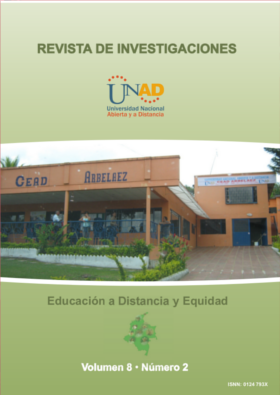Cuando la REVISTA DE INVESTIGACIONES UNAD recibe la postulación de un original por parte de su autor, ya sea a través de correo electrónico o postal, considera que puede publicarse en formatos físicos y/o electrónicos y facilitar su inclusión en bases de datos, hemerotecas y demás sistemas y procesos de indexación. REVISTA DE INVESTIGACIONES UNAD autoriza la reproducción y citación del material de la revista, siempre y cuando se indique de manera explícita el nombre de la revista, los autores, el título del artículo, volumen, número y páginas. Las ideas y conceptos expresados en los artículos son responsabilidad de los autores y en ningún caso reflejan las políticas institucionales de la UNAD
Análisis sobre la deserción en la educación superior a distancia y virtual: el caso de la UNAD - COLOMBIA
School drop-out is perhaps one of the phenomenons that most affects educational systems and, in particular, the efforts to improve the educational level of human resources in order to increase competitiveness and fully enter the knowledge-based society. Obviously, Colombia is no exception.
Various methodologies exist for analyzing the drop-out phenomenon. In Colombia, the National Education Ministry launched in 2006 the SPADIES system (System for Drop-out Prevention and Analysis in Higher Education Institutions), which considers the so-called first drop-out, i.e. abandoning an academic program during two consecutive semesters, a warning for educational institutions to adopt measures for its prevention. This study not only used information available from SPADIES (still incomplete, specially in institutions with virtual learning programs), but also a methodology for regional studies which measures desertion as a function of the difference between the number of members of an entering class and the sum of graduates and students who are still enrolled in the institution, after an adequate period for obtaining a degree.




